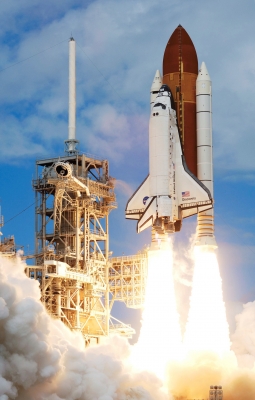
A new era in space flight began on April 12, 1981, when Space Shuttle Columbia, or STS-1, soared into orbit from NASA’s Kennedy Space Center in Florida.
Astronaut John Young, a veteran of four previous spaceflights including a walk on the moon in 1972, commanded the mission. Navy test pilot Bob Crippen piloted the mission and would go on to command three future shuttle missions. The shuttle was humankind’s first re-usable spacecraft. The orbiter would launch like a rocket and land like a plane. The two solid rocket boosters that helped push them into space would also be re-used, after being recovered in the ocean. Only the massive external fuel tank would burn up as it fell back to Earth. It was all known as the Space Transportation System.
Columbia accelerated into space propelled by two boosters that fell into the Atlantic Ocean, where they were later recovered and reused for other flights. The external tank fell from Columbia after about 9 minutes, and burned up in Earth’s atmosphere. The spacecraft was the first crewed American craft to fly without a prior uncrewed test flight, and was the first crewed mission to use solid fuel rockets.
Some of Columbia’s notable missions in later years included recovering the Long Duration Exposure Facility satellite from space (STS-32, January 1990), running the first Spacelab mission devoted to human medical research (STS-40, June 1991), and launching the Chandra X-Ray Observatory (STS-93, July 1999).
Picture Credit : Google

